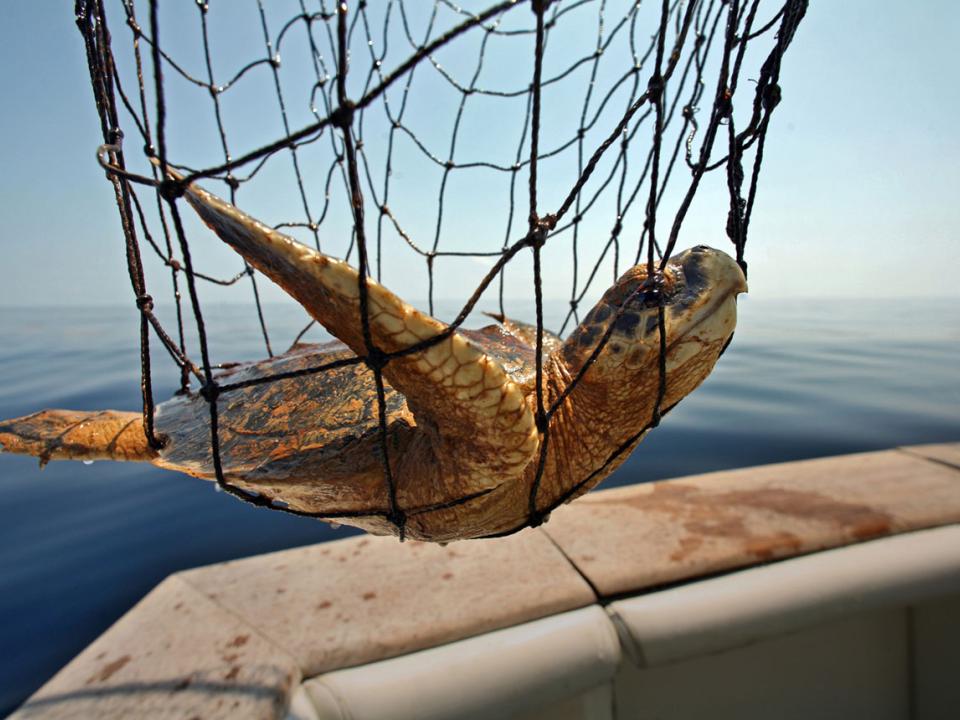
Oil released during the Deepwater Horizon disaster injured plants, wildlife, and entire ecosystems. The oil posed a widespread threat from the deepest reaches of the Gulf to its shorelines. Both private and public lands were adversely affected, including critically important federal and state lands.
Much of the released oil rose through the water column to the surface, encountering marine life on the way. At the water’s surface, the oil and dispersants spread out in a layer of contaminants that moved toward the shoreline. Many kinds of fish and wildlife were exposed to this floating oil, not only during the spill, but for some time after the spill ended. Much of the floating oil made it to barrier islands and shorelines, where it affected wildlife, people and the way people traditionally enjoyed the Gulf’s resources for recreation.
Habitat in the Affected Area
Wildlife depends on clean, healthy habitat for food, shelter, and reproduction. These important areas were affected by oiling, which led to habitat degradation and loss, decreased food abundance, and physical disturbance of the habitat.
- Deep Sea Habitat
-
Image
 Deep sea habitats such as bottom sediments and coral reefs are important to bottom-dwelling organisms—such as plankton, forage fish, and invertebrates—that are the base of the food chain. The soft sediments and sporadic coral outcroppings at this depth are home to tube worms, bacteria, jellyfish, fish, and corals. Sperm whales are known to dive to these depths to feed on squid, skate, fish, and sharks. This environment is quite inhospitable—temperatures are near freezing, pressure is high, and there is no sunlight. Oil, drilling mud, and dispersants were released in the vicinity of the well head, threatening these organisms.
Deep sea habitats such as bottom sediments and coral reefs are important to bottom-dwelling organisms—such as plankton, forage fish, and invertebrates—that are the base of the food chain. The soft sediments and sporadic coral outcroppings at this depth are home to tube worms, bacteria, jellyfish, fish, and corals. Sperm whales are known to dive to these depths to feed on squid, skate, fish, and sharks. This environment is quite inhospitable—temperatures are near freezing, pressure is high, and there is no sunlight. Oil, drilling mud, and dispersants were released in the vicinity of the well head, threatening these organisms. - Water Column Habitat
-
Image
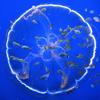 The water column serves as important habitat for many species. Plankton, jellyfish, fish, marine mammals, and many other organisms live in or use the water column to feed, migrate, seek shelter, and reproduce. Much of the oil released from the Deepwater Horizon wellhead traveled up through the water column, where some of it dissolved, impacting organisms living there. Even animals that don’t live in or on the water but depend on it for food, such as diving birds, were also injured by the contamination.
The water column serves as important habitat for many species. Plankton, jellyfish, fish, marine mammals, and many other organisms live in or use the water column to feed, migrate, seek shelter, and reproduce. Much of the oil released from the Deepwater Horizon wellhead traveled up through the water column, where some of it dissolved, impacting organisms living there. Even animals that don’t live in or on the water but depend on it for food, such as diving birds, were also injured by the contamination. - Water Surface and Sargassum Mats
-
Image
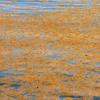 The vast surface waters of the Gulf of Mexico support a wide variety of wildlife. When oil reached the water surface, emergency response workers and researchers observed oil on the surface of Gulf waters directly impacting dolphins, sperm whales, whale sharks, birds, and sea turtles. Floating oil also affected an important plant species: Sargassum, a type of brown algae that forms large floating mats in the Gulf of Mexico. These mats support marine fish, invertebrates, sea turtles, and other living things. Contamination of Sargassum mats brought many organisms into direct contact with oil.
The vast surface waters of the Gulf of Mexico support a wide variety of wildlife. When oil reached the water surface, emergency response workers and researchers observed oil on the surface of Gulf waters directly impacting dolphins, sperm whales, whale sharks, birds, and sea turtles. Floating oil also affected an important plant species: Sargassum, a type of brown algae that forms large floating mats in the Gulf of Mexico. These mats support marine fish, invertebrates, sea turtles, and other living things. Contamination of Sargassum mats brought many organisms into direct contact with oil. - Near Shore Habitat
-
Image
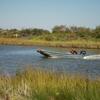 Oyster reefs, seagrass beds, beaches, tidal mud flats, mangroves, marshes and wetlands are all habitat found on or near the shoreline. At least 1,300 miles of Gulf shoreline were exposed to oil as the oil slicks made landfall. Animals and habitats were impacted by the oil and disturbed by response and cleanup activities. Once on shore, the oil impacted aquatic organisms, which use nearshore habitats for feeding and nursery areas. The oil also posed a threat to marsh and shore birds and terrestrial wildlife.
Oyster reefs, seagrass beds, beaches, tidal mud flats, mangroves, marshes and wetlands are all habitat found on or near the shoreline. At least 1,300 miles of Gulf shoreline were exposed to oil as the oil slicks made landfall. Animals and habitats were impacted by the oil and disturbed by response and cleanup activities. Once on shore, the oil impacted aquatic organisms, which use nearshore habitats for feeding and nursery areas. The oil also posed a threat to marsh and shore birds and terrestrial wildlife.
Fish and Wildlife of the Affected Area
Fish and wildlife in the Gulf came into contact with the oil by swimming through the oil (or dispersants), ingesting it, or inhaling it at the surface. These exposures caused a variety of health impacts, including death.
- Fish and Shellfish
-
Image

- Hundreds of fish species where exposed to oil. Red snapper, bluefin tuna, and spotted seatrout are among species with known effects from the oil.
- Trillions of larval fish and invertebrates were killed in offshore surface, deep oceanic, and estuarine waters. These larval losses translate to millions to billions of fish that would have reached a year old.
- Fish suffered many negative effects from the oil, including impaired reproduction and reduced growth.
- Reef fish communities were also impacted. There were changes to the number and type of fish species living on the reefs, and to the overall food web of the reefs.
- Shellfish in the Gulf affected by the oil spill included oysters, scallops, and several species of shrimp and crabs. Billions of shellfish were killed by oil that reached the shoreline, as well as by river water that was released into the Gulf during the response to the spill. These losses will affect reproduction and recruitment over multiple generations. Oyster reefs serve as habitat for other aquatic organisms such as shellfish, crabs, and finfish. They also serve as filters to improve water quality. This loss will have cascading adverse effects on all of the organisms that use the reefs.
- Marine Mammals
-
Image
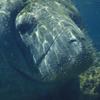
There are many kinds of mammals known to live in the Gulf of Mexico. These animals include 12 species of whales, nine types of dolphins and the Florida manatee. Under the Endangered Species Act, six of the whale species and the manatee are listed as endangered.
- Injuries to marine mammals included elevated death rates, reduced reproduction, and disease.
- Barataria Bay bottlenose dolphins were one of the most severely injured populations: the oil spill caused a 35 percent increase in death, a 46 percent increase in failed reproduction, and a 37 percent increase in adverse health effects compared with a healthy population. These adverse health effects include adrenal and lung disease and low reproductive success.
- Oil exposure resulted in up to an estimated 7 percent decline in the population of endangered sperm whales.
- 48 percent of the Bryde’s whales population was impacted by the oil, resulting in up to an estimated 22 percent decline in population.
- Turtles
-
Image
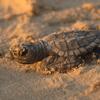
- Five species of threatened/endangered sea turtles (Kemp’s ridley, green, hawksbill, leatherback, and loggerhead) are residents of the Gulf of Mexico.
- The most important nesting beaches in the world for Kemp’s ridley turtles are in Texas and Mexico.
- The Gulf of Mexico waters include some of the Gulf’s most important habitat and foraging areas for many of these turtles.
- Sea turtles throughout the northern Gulf of Mexico suffered adverse effects, including decreased mobility, exhaustion, dehydration, overheating, likely decreased ability to feed and evade predators, and death.
- Between 4,900 and 7,600 large juvenile and adult sea turtles, and between 56,000 and 166,000 small juvenile sea turtles, were killed by the spill.
- Nearly 35,000 hatchling sea turtles were also injured by response activities.
- Deep water habitat
-
Image
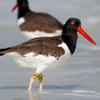 Studies included sampling water and sediment for the presence of oil near deep reef communities. We also took tissue samples from deep water organisms. Surveys were taken to quantify the biodiversity, distribution, and abundance of deep-sea wildlife via video and photographs taken at the well head on the sea floor.
Studies included sampling water and sediment for the presence of oil near deep reef communities. We also took tissue samples from deep water organisms. Surveys were taken to quantify the biodiversity, distribution, and abundance of deep-sea wildlife via video and photographs taken at the well head on the sea floor.

